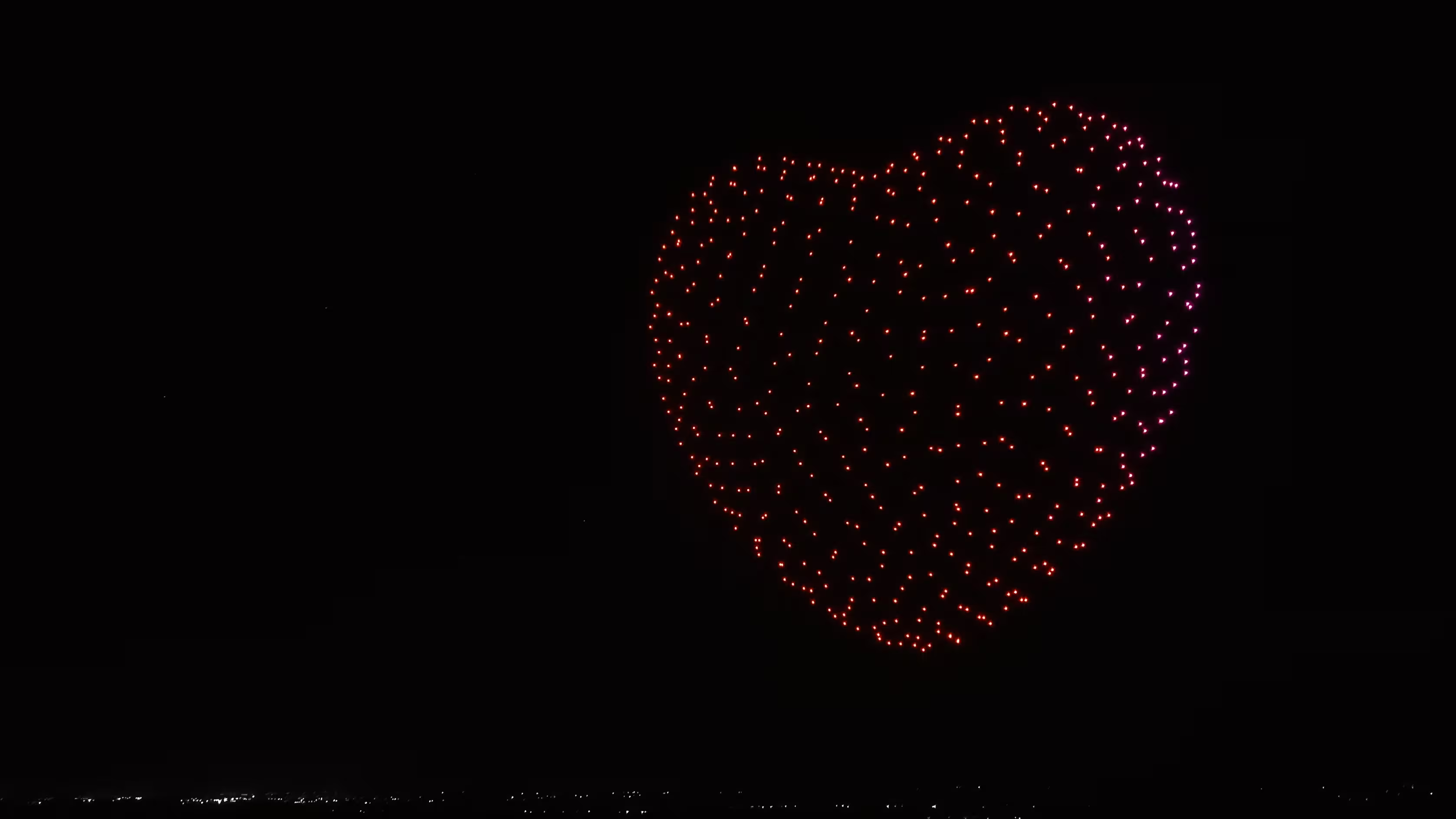Light Show Drone
A light show drone is an unmanned aerial vehicle (UAV) equipped with lighting systems, typically LED lights, designed to perform synchronized aerial displays for entertainment, artistic, or promotional purposes. These drones are programmed to fly in coordinated patterns, creating dynamic visual spectacles in the night sky, often accompanied by music or other multimedia elements. Light show drones have become increasingly popular for large-scale events, such as festivals, corporate promotions, and public celebrations, due to their ability to produce intricate, customizable displays with minimal environmental impact compared to traditional fireworks.
History
The concept of using drones for light shows emerged in the early 2010s as drone technology advanced, allowing for precise control and synchronization. One of the earliest notable displays was performed by Intel in 2015, when the company showcased a fleet of 100 drones at the Consumer Electronics Show (CES), setting a Guinness World Record for the most UAVs airborne simultaneously. This event marked a turning point, popularizing drone light shows as a viable alternative to pyrotechnics. Since then, companies like Intel, EHang, and Dronisos have developed sophisticated systems for large-scale performances, with shows featuring thousands of drones, such as Intel’s 3,281-drone display at the 2018 Winter Olympics in PyeongChang.
Technology
Light show drones are typically lightweight quadcopters equipped with the following components:
- LED Lighting Systems: High-intensity, programmable LEDs capable of displaying millions of colors. These are lightweight to maintain flight efficiency.
- Flight Control Systems: Advanced GPS, inertial measurement units (IMUs), and onboard computers ensure precise positioning and choreography.
- Swarm Technology: Proprietary software enables hundreds or thousands of drones to operate in unison, avoiding collisions through real-time communication and pre-programmed flight paths.
- Battery Systems: High-capacity lithium-ion batteries provide 10–20 minutes of flight time, sufficient for most shows.
The drones are controlled by a central ground station, which sends commands via radio signals. Software platforms, such as Intel’s Shooting Star or Sky Elements’ proprietary systems, allow operators to design complex animations, including 3D shapes, logos, and text.
Applications
Light show drones are used in various contexts, including:
- Entertainment: Concerts, festivals, and sporting events, such as the Super Bowl halftime show or New Year’s Eve celebrations.
- Advertising: Corporate branding, product launches, and promotional campaigns, where drones form logos or slogans in the sky.
- Public Events: National holidays, cultural festivals, and ceremonies, such as the UAE’s 50th National Day display with 4,000 drones.
- Art Installations: Collaborative projects with artists to create dynamic, temporary sculptures in the sky.
Advantages and Challenges
Advantages
- Eco-Friendly: Unlike fireworks, drones produce no chemical pollution, noise, or debris, making them a sustainable alternative.
- Customizability: Drones can form virtually any shape or pattern, offering greater flexibility than traditional displays.
- Safety: Reduced fire risk compared to pyrotechnics, especially in dry or urban environments.
Challenges
- Cost: Deploying hundreds or thousands of drones is expensive, with costs for equipment, programming, and logistics often exceeding $100,000 for large shows.
- Regulatory Restrictions: Airspace regulations, particularly in urban areas, require permits and coordination with aviation authorities.
- Weather Sensitivity: Wind, rain, or extreme temperatures can disrupt drone operations, requiring precise weather forecasting.
- Battery Life: Limited flight time constrains the duration of performances.
Notable Examples
- 2018 Winter Olympics: Intel’s 1,218-drone display formed the Olympic rings and other patterns during the opening ceremony.
- Super Bowl LI (2017): Lady Gaga’s halftime show featured 300 Intel Shooting Star drones creating a flag and stars.
- Singapore National Day (2021): A 500-drone show depicted national symbols and historical milestones.
Future Developments
Advancements in drone technology, such as improved battery life, AI-driven swarm coordination, and integration with augmented reality (AR), are expected to enhance the scale and complexity of light shows. Additionally, research into solar-powered drones and reusable systems may reduce costs and environmental impact. The industry is also exploring applications in education and disaster response, where drones could visualize data or deliver messages in remote areas.

